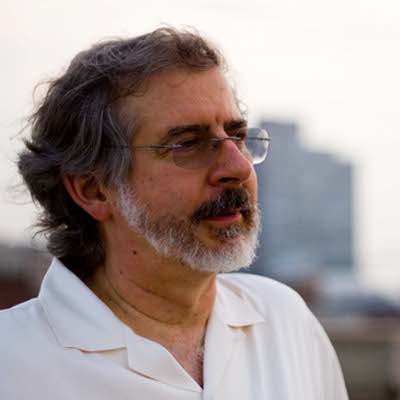
Jon Kuhn is regarded as one of the leading glass artists in the world. With works featured in over 45 international museums including the Metropolitan Museum of Art, The Carnegie Museum, White House Permanent Collection, National Museum of American Art and hundreds of private residences and public spaces.
Kuhn was born and raised in Chicago, the son of a political science professor. As a young adult he made his way to Shimer College, then on to Washburn University in Topeka, Kansas, where he received his BFA in 1972. Although still uncertain about pursuing a career as an artist, he had learned a great deal about the vocabulary and processes of art and had focused most consistently on ceramics. His continuing curiosity about art and the encouragement he had received from his faculty at Washburn made Kuhn decide to try graduate school, and he attended Virginia Commonwealth University in Richmond, receiving his MFA in 1978.
Graduate school for Kuhn was invigorating – although he had learned much about how to make art at Washburn, it was at VCU that he was challenged to articulate the ideas and concepts behind that art, to think more deeply about the messages he was trying to convey. Simultaneous with that experience were Kuhn’s first efforts in glass – he took to the medium immediately, and he has never looked back.
From the first, what excited Kuhn about glass was his creation of some core element within it, some curious bit of concentrated pictorial incident that would be encased in subsequent layers of clear glass. His objects would have a kind of interior life, a central drama into which we peer, a condensed area of activity that would draw us ceaselessly in. During the late 1970s and early 1980s, Kuhn was working in hot glass and sometimes encased these blown, irregularly shaped globe in pebbly and crusty exteriors. He would then cleave off slices of these raw-looking exteriors to reveal the glistening glass within, to provide windows into their inner selves.
Only after moving to Winston-Salem in 1985, did Kuhn begin to focus on the method that has subsequently brought him such consistent acclaim. What engrossed him in the earlier work was the interior drama of his pieces, and he realized that for him blown glass was not the best way to achieve the detail and complexity he was seeking to install inside his work.
Instead he began to concentrate on cold-working, on building his pieces up out of seemingly countless bits of laminated optical and colored glass. The labor-intensive procedures of grinding, polishing, and adhering would become the methods by which to create the explosive and dazzling effects he desired.
A mature work by Jon Kuhn begins with some of the purest glass fabricated anywhere on the planet. Schott Glass, produced at a highly specialized factory in Pennsylvania, can reach the state of 99.8 percent transparency. A piece by Jon Kuhn is an aperture into infinity – it changes every moment; its exterior may be stable and conform to the procedures of sculpture and objecthood but the insides certainly do not. There are no rules for the core; it will take light and lead it on a dazzling chase, in and out of the piece, projecting the light outward, extending its scale onto nearby walls and viewers. A sculpture by Jon Kuhn moves at the speed of light, never knowing a static moment, never remaining at rest. Light is life, and Kuhn’s sculpture is finally a dramatic stage for a contemplation of its potential, physical and metaphysical.
Sometimes there seems to be a contradiction between technology and spirituality, as if those two systems are not reconcilable. Jon Kuhn’s work, in which technology strives for perfection, testifies that they are reconcilable, and that they can become one.
For information on more available work from this artist, please contact us.